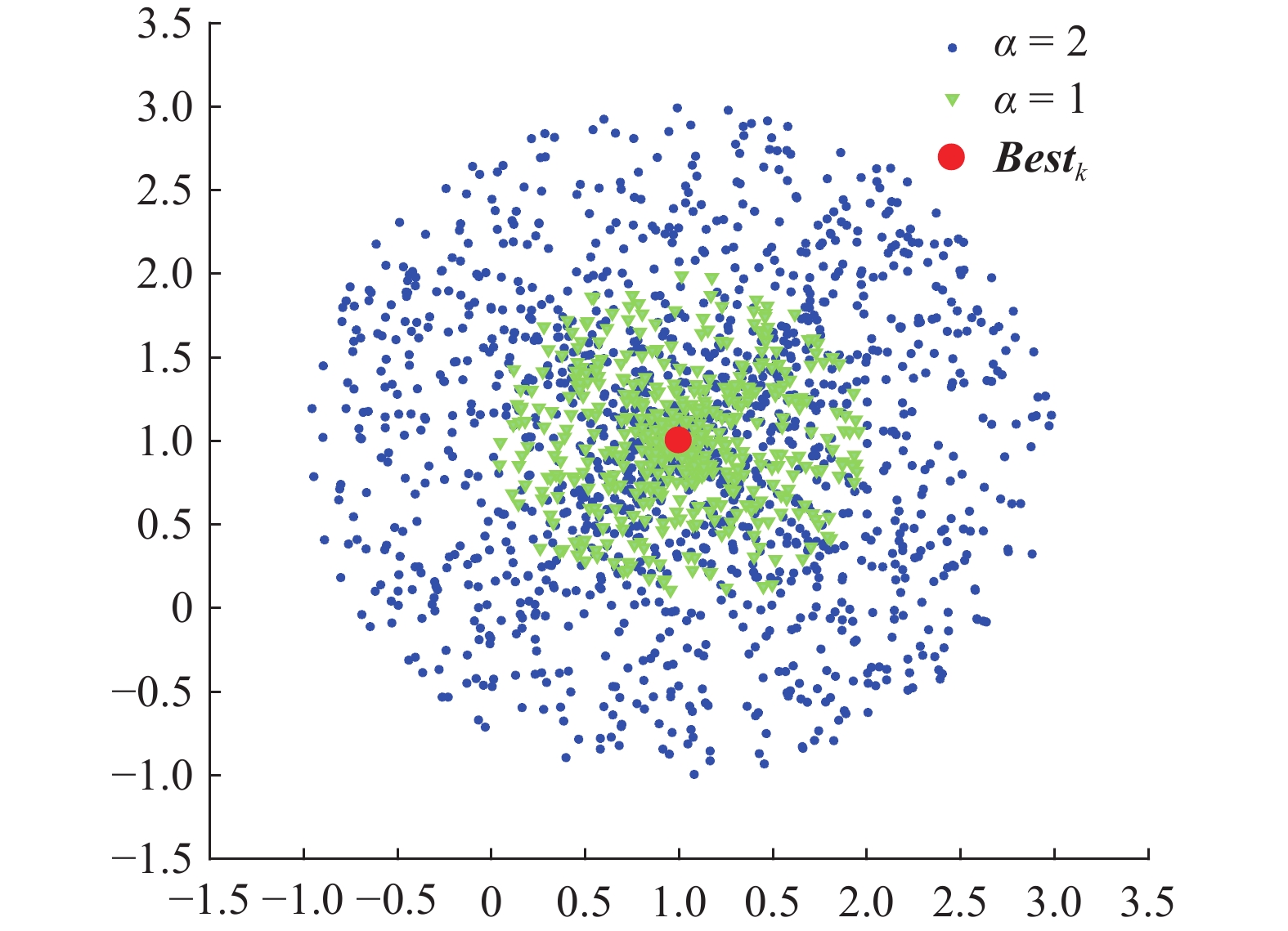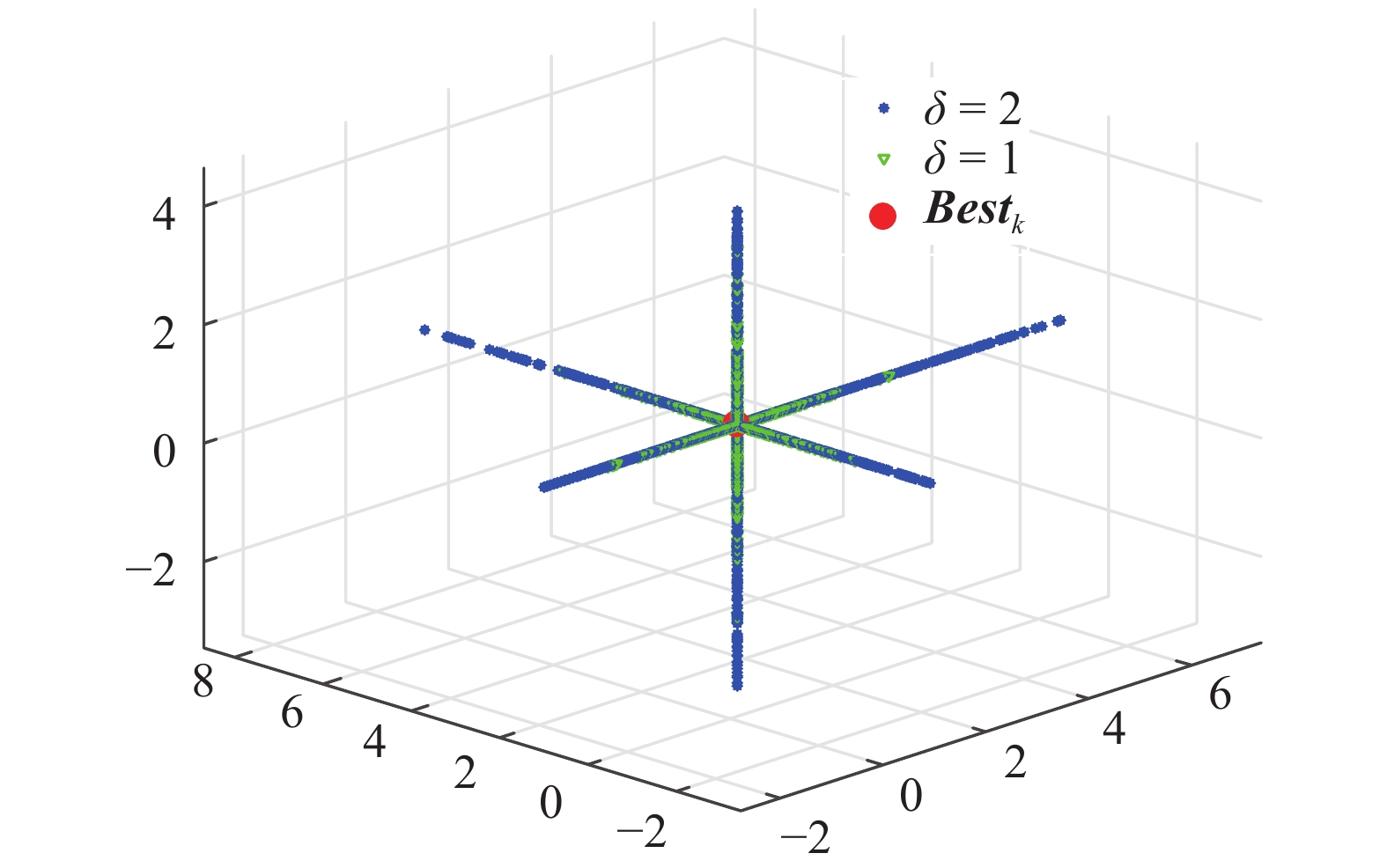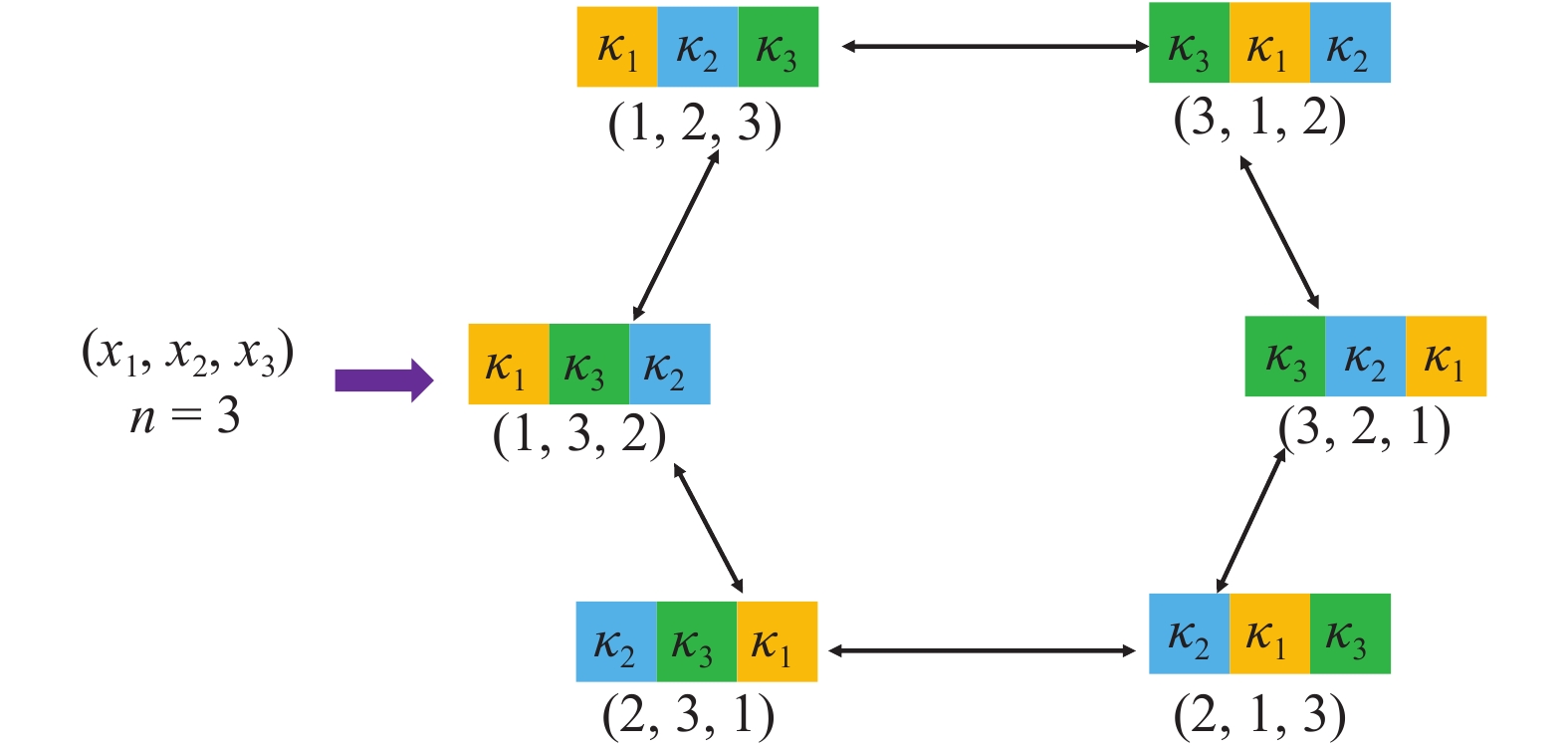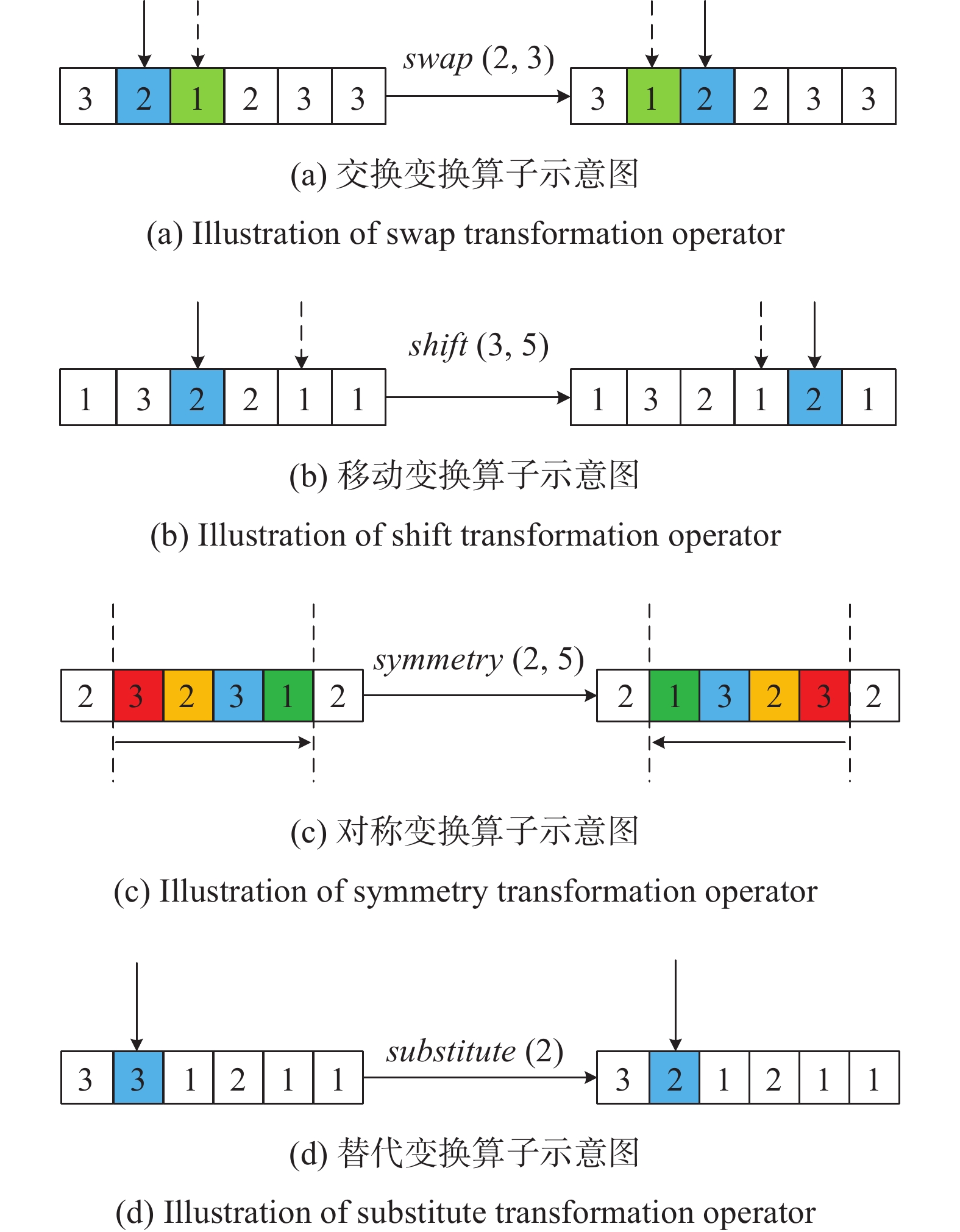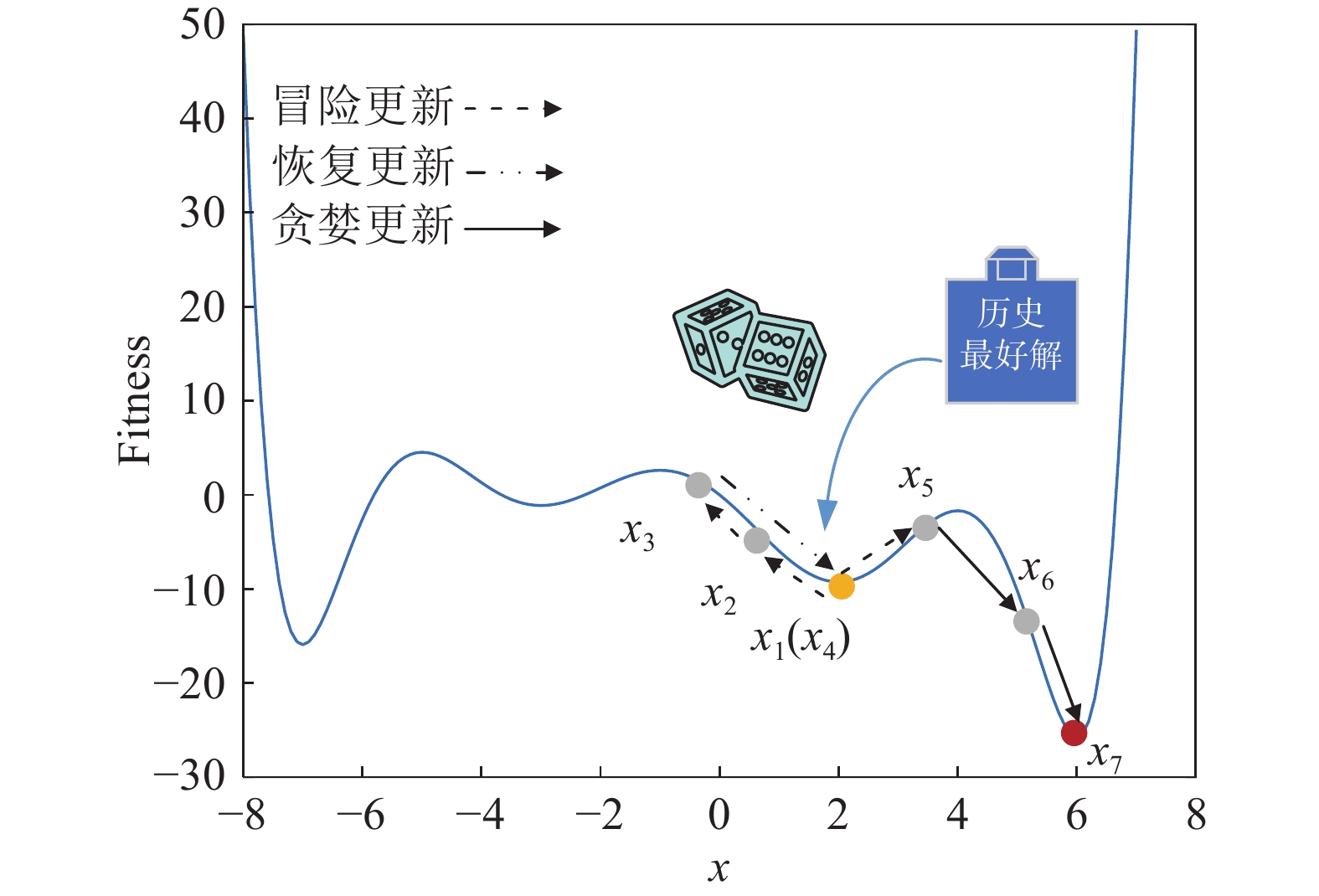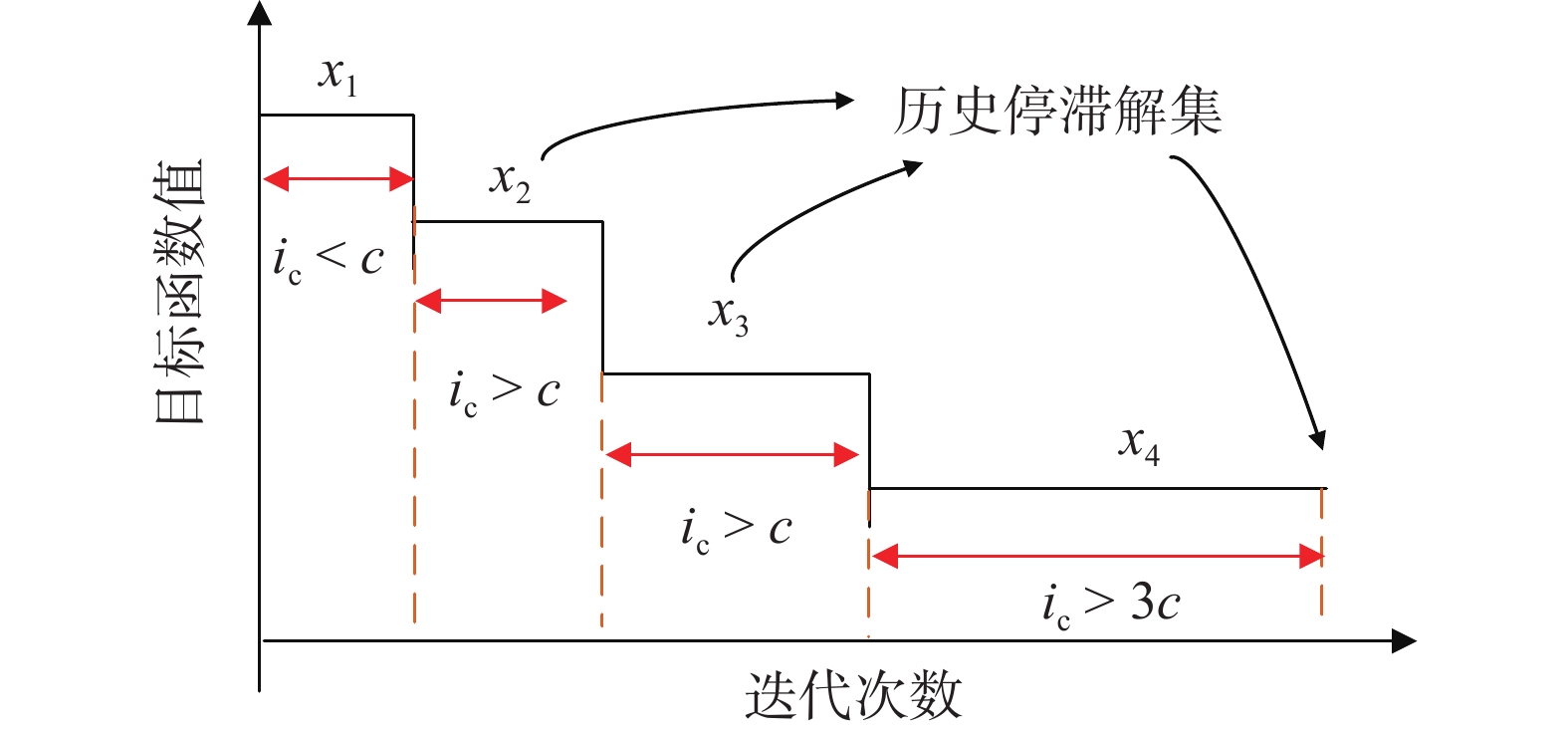|
[1]
|
Floudas C A, Gounaris C E. A review of recent advances in global optimization. Journal of Global Optimization, 2009, 45(1): 3−38 doi: 10.1007/s10898-008-9332-8
|
|
[2]
|
Tawarmalani M, Sahinidis N V. A polyhedral branch-and-cut approach to global optimization. Mathematical Programming, 2005, 103(2): 225−249 doi: 10.1007/s10107-005-0581-8
|
|
[3]
|
Gao D Y. Canonical duality theory: Unified understanding and generalized solution for global optimization problems. Computers & Chemical Engineering, 2009, 33(12): 1964−1972
|
|
[4]
|
Zhou X J, Yang C H, Gui W H. State transition algorithm. Journal of Industrial and Management Optimization, 2012, 8(4): 1039−1056 doi: 10.3934/jimo.2012.8.1039
|
|
[5]
|
Zhou X J, Gao D Y, Yang C H. A comparative study of state transition algorithm with harmony search and artificial bee colony. In: Proceedings of the 8th International Conference on Bio-Inspired Computing: Theories and Applications (BIC-TA), 2013. Berlin, Heidelberg: Springer, 2013. 651−659
|
|
[6]
|
Zhou X J, Yang C H, Gui W H. A matlab toolbox for continuous state transition algorithm. In: Proceedings of the 35th Chinese Control Conference. Chengdu, China: IEEE, 2016. 9172−9177
|
|
[7]
|
Zhou X J, Yang C H, Gui W H. A comparative study of STA on large scale global optimization. In: Proceedings of the 12th World Congress on Intelligent Control and Automation. Guilin, China: IEEE, 2016. 2115−2119
|
|
[8]
|
Zhou X J, Gao D Y, Yang C H, Gui W H. Discrete state transition algorithm for unconstrained integer optimization problems. Neurocomputing, 2016, 173: 864−874 doi: 10.1016/j.neucom.2015.08.041
|
|
[9]
|
阳春华, 唐小林, 周晓君, 桂卫华. 一种求解旅行商问题的离散状态转移算法. 控制理论与应用, 2013, 30(8): 1040−1046 doi: 10.7641/CTA.2013.12167Yang Chun-Hua, Tang Xiao-Lin, Zhou Xiao-Jun, Gui Wei-Hua. A discrete state transition algorithm for traveling salesman problem. Control Theory & Applications, 2013, 30(8): 1040−1046 doi: 10.7641/CTA.2013.12167
|
|
[10]
|
董天雪, 阳春华, 周晓君, 桂卫华. 一种求解企业员工指派问题的离散状态转移算法. 控制理论与应用, 2016, 33(10): 1378−1388 doi: 10.7641/CTA.2016.50982Dong Tian-Xue, Yang Chun-Hua, Zhou Xiao-Jun, Gui Wei-Hua. A novel discrete state transition algorithm for staff assignment problem. Control Theory & Applications, 2016, 33(10): 1378−1388 doi: 10.7641/CTA.2016.50982
|
|
[11]
|
Han J, Dong T X, Zhou X J, Yang C H, Gui W H. State transition algorithm for constrained optimization problems. In: Proceedings of the 33rd Chinese Control Conference. Nanjing, China: IEEE, 2014. 7543−7548
|
|
[12]
|
Han J, Yang C H, Zhou X J, Gui W H. A two-stage state transition algorithm for constrained engineering optimization problems. International Journal of Control, Automation and Systems, 2018, 16(2): 522−534 doi: 10.1007/s12555-016-0338-6
|
|
[13]
|
Zhou X J, Long J P, Xu C C, Jia G B. An external archive-based constrained state transition algorithm for optimal power dispatch. Complexity, 2019, 2019: 4727168
|
|
[14]
|
Zhou J J, Zhou X J, Yang C H, Gui W H. A multi-objective state transition algorithm for continuous optimization. In: Proceedings of the 36th Chinese Control Conference. Dalian, China: IEEE, 2017. 9859−9864
|
|
[15]
|
Zhou X J, Zhou J J, Yang C H, Gui W H. Set-point tracking and multi-objective optimization-based PID control for the goethite process. IEEE Access, 2018, 6: 36683−36698 doi: 10.1109/ACCESS.2018.2847641
|
|
[16]
|
Zhou X J, Hanoun S, Gao D Y, Nahavandi S. A multiobjective state transition algorithm for single machine scheduling. Advances in Global Optimization. Cham, Germany: Springer, 2015. 79−88
|
|
[17]
|
周晓君, 周佳佳, 徐冲冲. 一种基于分解的多目标状态转移优化方法及系统, 中国CN201910313379.4, 2019年8月23日.Zhou Xiao-Jun, Zhou Jia-Jia, Xu Chong-Chong. Decomposition-based Multi-objective State Transition Optimization Method and System, China CN201910313379.4, August 23, 2019
|
|
[18]
|
Zhou X J, Yang C H, Gui W H. A statistical study on parameter selection of operators in continuous state transition algorithm. IEEE Transactions on Cybernetics, 2019, 49(10): 3722−3730 doi: 10.1109/TCYB.2018.2850350
|
|
[19]
|
Huang M, Zhou X J, Huang T W, Yang C H, Gui W H. Dynamic optimization based on state transition algorithm for copper removal process. Neural Computing and Applications, 2019, 31(7): 2827−2839 doi: 10.1007/s00521-017-3232-0
|
|
[20]
|
Zhou X J, Shi P, Lim C C, Yang C H, Gui W H. A dynamic state transition algorithm with application to sensor network localization. Neurocomputing, 2018, 273: 237−250 doi: 10.1016/j.neucom.2017.08.010
|
|
[21]
|
Wang Y L, He H M, Zhou X J, Yang C H, Xie Y F. Optimization of both operating costs and energy efficiency in the alumina evaporation process by a multi-objective state transition algorithm. The Canadian Journal of Chemical Engineering, 2016, 94(1): 53−65 doi: 10.1002/cjce.22353
|
|
[22]
|
Wang C, Zhang H L, Fan W H. Volterra Series identification based on state transition algorithm with orthogonal transformation. Telkomnika, 2016, 14(1): 171−180 doi: 10.12928/telkomnika.v14i1.2663
|
|
[23]
|
Han X X, Dong Y C, Yue L, Xu Q X. State transition simulated annealing algorithm for discrete-continuous optimization problems. IEEE Access, 2019, 7: 44391−44403 doi: 10.1109/ACCESS.2019.2908961
|
|
[24]
|
Zhou X J, Yang C H, Gui W H. Nonlinear system identification and control using state transition algorithm. Applied Mathematics and Computation, 2014, 226: 169−179 doi: 10.1016/j.amc.2013.09.055
|
|
[25]
|
Bartczuk Ł, Dziwiński P, Red’ko V G. The concept on nonlinear modelling of dynamic objects based on state transition algorithm and genetic programming. In: Proceedings of the 16th International Conference on Artificial Intelligence and Soft Computing. Zakopane, Poland: Springer, 2017. 209−220
|
|
[26]
|
王聪, 张宏立. 基于混沌策略状态转移算法的混沌系统参数辨识. 计算机应用研究, 2016, 33(5): 1346−1349 doi: 10.3969/j.issn.1001-3695.2016.05.015Wang Cong, Zhang Hong-Li. Parameter identification in chaotic systems based on state transition algorithm combined with chaotic strategy. Application Research of Computers, 2016, 33(5): 1346−1349 doi: 10.3969/j.issn.1001-3695.2016.05.015
|
|
[27]
|
Wang Y L, Peng K, Yuan X F, Chen G Y, Li L. Parameter identification for breakage distribution function of bauxite based on state transition algorithm. In: Proceedings of the 6th International Symposium on Advanced Control of Industrial Processes. Taipei, China: IEEE, 2017. 251−256
|
|
[28]
|
Xie Y F, Wei S M, Wang X L, Xie S, Yang C H. A new prediction model based on the leaching rate kinetics in the alumina digestion process. Hydrometallurgy, 2016, 164: 7−14 doi: 10.1016/j.hydromet.2016.05.005
|
|
[29]
|
闫雨晴, 谢永芳, 王晓丽, 尉思谜, 张杏婵. 双流法溶出过程操作参数优化方法. 化工学报, 2017, 68(3): 1014−1022Yan Yu-Qing, Xie Yong-Fang, Wang Xiao-Li, Wei Si-Mi, Zhang Xing-Chan. Optimization method of double-stream alumina digestion process parameters. CIESC Journal, 2017, 68(3): 1014−1022
|
|
[30]
|
Rajalakshmi M, Karthik C, Jeyadevi S. Constraint STA optimization for nonlinear modeling and modified MRAC of drying process in paper industry. TAGA Journal, 2018, 14: 2585−2599
|
|
[31]
|
Murugesan R, Solaimalai J, Chandran K. Computer-aided controller design for a nonlinear process using a Lagrangian-based state transition algorithm. Circuits, Systems, and Signal Processing, 2020, 39(2): 977−996 doi: 10.1007/s00034-019-01139-5
|
|
[32]
|
Zhang F X, Yang C H, Zhou X J, Gui W H. Fractional-order PID controller tuning using continuous state transition algorithm. Neural Computing and Applications, 2018, 29(10): 795−804 doi: 10.1007/s00521-016-2605-0
|
|
[33]
|
Zhang F X, Yang C H, Zhou X J, Zhu H Q. Fractional order fuzzy PID optimal control in copper removal process of zinc hydrometallurgy. Hydrometallurgy, 2018, 178: 60−76 doi: 10.1016/j.hydromet.2018.03.021
|
|
[34]
|
Saravanakumar G, Valarmathi K, Rajasekaran M P, Seshadhri S, Kadhar K M A. State Transition Algorithm (STA) based tuning of integer and fractional-order PID controller for benchmark system. In: Proceedings of the 2015 IEEE International Conference on Computational Intelligence and Computing Research. Madurai, India: IEEE, 2015. 1−5
|
|
[35]
|
Saravanakumar G, Valarmathi K, Rajasekaran M P, Srinivasan S, Iruthayarajan M W, Balas V E. Tuning of multivariable decentralized PID controller using state transition algorithm. Studies in Informatics and Control, 2015, 24(4): 367−378
|
|
[36]
|
Saravanakumar G, Valarmathi K, Iruthayarajan M W, Srinivasan S. Lagrangian-based state transition algorithm for tuning multivariable decentralised controller. International Journal of Advanced Intelligence Paradigms, 2016, 8(3): 303−317 doi: 10.1504/IJAIP.2016.077497
|
|
[37]
|
Zhang F X, Yang C H, Zhou X J, Gui W H. Optimal setting and control strategy for industrial process based on discrete-time fractional-order PIλDμ. IEEE Access, 2019, 7: 47747−47761 doi: 10.1109/ACCESS.2019.2909816
|
|
[38]
|
阳春华, 韩洁, 周晓君, 张润东, 桂卫华. 有色冶金过程不确定优化方法探讨. 控制与决策, 2018, 33(5): 856−865Yang Chun-Hua, Han Jie, Zhou Xiao-Jun, Zhang Run-Dong, Gui Wei-Hua. Discussion on uncertain optimization methods for nonferrous metallurgical processes. Control and Decision, 2018, 33(5): 856−865
|
|
[39]
|
Han J, Yang C H, Zhou X J, Gui W H. Dynamic multi-objective optimization arising in iron precipitation of zinc hydrometallurgy. Hydrometallurgy, 2017, 173: 134−148 doi: 10.1016/j.hydromet.2017.08.007
|
|
[40]
|
谢世文, 谢永芳, 李勇刚, 阳春华, 桂卫华. 湿法炼锌沉铁过程氧化速率优化控制. 自动化学报, 2015, 41(12): 2036−2046Xie Shi-Wen, Xie Yong-Fang, Li Yong-Gang, Yang Chun-Hua, Gui Wei-Hua. Optimal control of oxidizing rate for iron precipitation process in zinc hydrometallurgy. Acta Automatica Sinica, 2015, 41(12): 2036−2046
|
|
[41]
|
张凤雪, 阳春华, 周晓君, 桂卫华. 基于控制周期计算的锌液净化除铜过程优化控制. 控制理论与应用, 2017, 34(10): 1388−1395 doi: 10.7641/CTA.2017.60621Zhang Feng-Xue, Yang Chun-Hua, Zhou Xiao-Jun, Gui Wei-Hua. Optimal control based on control period calculation for copper removal process of zinc solution purification. Control Theory & Applications, 2017, 34(10): 1388−1395 doi: 10.7641/CTA.2017.60621
|
|
[42]
|
Wang G W, Yang C H, Zhu H Q, Li Y G, Peng X W, Gui W H. State-transition-algorithm-based resolution for overlapping linear sweep voltammetric peaks with high signal ratio. Chemometrics and Intelligent Laboratory Systems, 2016, 151: 61−70 doi: 10.1016/j.chemolab.2015.12.008
|
|
[43]
|
Huang M, Zhou X J, Yang C H, Gui W H. Dynamic optimization using control vector parameterization with state transition algorithm. In: Proceedings of the 36th Chinese Control Conference. Dalian, China: IEEE, 2017. 4407−4412
|
|
[44]
|
Yue W C, Gui W H, Chen X F, Zeng Z H, Xie Y F. Knowledge representation and reasoning using self-learning interval type-2 fuzzy Petri nets and extended TOPSIS. International Journal of Machine Learning and Cybernetics, 2019, 10(12): 3499−3520 doi: 10.1007/s13042-019-00940-7
|
|
[45]
|
左健, 谢永芳, 王晓丽, 王峰, 阳春华. 基于分析的氧化铝多效蒸发过程液位优化设定方法. 化工学报, 2017, 68(3): 1005−1013Zuo Jian, Xie Yong-Fang, Wang Xiao-Li, Wang Feng, Yang Chun-Hua. Liquid level optimal-setting for alumina multi-effect evaporation process based on exergy analysis. CIESC Journal, 2017, 68(3): 1005−1013
|
|
[46]
|
Yang C H, Deng S J, Li Y G, Zhu H Q, Li F B. Optimal control for zinc electrowinning process with current switching. IEEE Access, 2017, 5: 24688−24697 doi: 10.1109/ACCESS.2017.2768068
|
|
[47]
|
王雅琳, 黄凯华, 黄天红, 周晓君, 阳春华. 基于改进小波神经网络的极谱法多金属离子浓度检测信号的在线解析. 中南大学学报(自然科学版), 2016, 47(1): 100−107 doi: 10.11817/j.issn.1672-7207.2016.01.015Wang Ya-Lin, Huang Kai-Hua, Huang Tian-Hong, Zhou Xiao-Jun, Yang Chun-Hua. Online analysis on polarographic detection signal of multi-metal ion concentrations based on improved wavelet neural networks. Journal of Central South University (Science and Technology), 2016, 47(1): 100−107 doi: 10.11817/j.issn.1672-7207.2016.01.015
|
|
[48]
|
Chen X F, Qian Y C, Wang Y L. Power consumption prediction for dynamic adjustment in hydrocracking process based on state transition algorithm and support vector machine. In: Proceedings of the 24th International Conference on Neural Information Processing. Guangzhou, China: Springer, 2017. 85−94
|
|
[49]
|
Wang Q A, Huang M, Zhou X J. Feature selection in froth flotation for production condition recognition. IFAC-PapersOnLine, 2018, 51(21): 123−128 doi: 10.1016/j.ifacol.2018.09.403
|
|
[50]
|
Huang Z K, Yang C H, Zhou X J, Yang S X. Energy consumption forecasting for the nonferrous metallurgy industry using hybrid support vector regression with an adaptive state transition algorithm. Cognitive Computation, 2020, 12(2): 357−368 doi: 10.1007/s12559-019-09644-0
|
|
[51]
|
Huang Z K, Yang C H, Zhou X J, Huang T W. A hybrid feature selection method based on binary state transition algorithm and ReliefF. IEEE Journal of Biomedical and Health Informatics, 2019, 23(5): 1888−1898 doi: 10.1109/JBHI.2018.2872811
|
|
[52]
|
Zhou X J, Yang K, Xie Y F, Yang C H, Huang T W. A novel modularity-based discrete state transition algorithm for community detection in networks. Neurocomputing, 2019, 334: 89−99 doi: 10.1016/j.neucom.2019.01.009
|
|
[53]
|
Zhang H L, Wang C, Fan W H. A new filter collaborative state transition algorithm for two-objective dynamic reactive power optimization. Tsinghua Science and Technology, 2019, 24(1): 30−43 doi: 10.26599/TST.2018.9010068
|
|
[54]
|
Zhou X J, Gao D Y, Simpson A R. Optimal design of water distribution networks by a discrete state transition algorithm. Engineering Optimization, 2016, 48(4): 603−628 doi: 10.1080/0305215X.2015.1025775
|
|
[55]
|
Mala-Jetmarova H, Sultanova N, Savic D. Lost in optimisation of water distribution systems? A literature review of system operation. Environmental Modelling & Software, 2017, 93: 209−254
|
|
[56]
|
Huang Z K, Yang C H, Zhou X J, Gui W H. A novel cognitively inspired state transition algorithm for solving the linear bi-level programming problem. Cognitive Computation, 2018, 10(5): 816−826 doi: 10.1007/s12559-018-9561-1
|
|
[57]
|
Pan D, Jiang Z H, Chen Z P, Gui W H, Xie Y F, Yang C H. A novel method for compensating temperature measurement error caused by dust using infrared thermal imager. IEEE Sensors Journal, 2018, 19(5): 1730−1739
|
|
[58]
|
Xie S, Yang C H, Wang X L, Xie Y F. Data reconciliation strategy with time registration for the evaporation process in alumina production. The Canadian Journal of Chemical Engineering, 2018, 96(1): 189−204 doi: 10.1002/cjce.22893
|
|
[59]
|
Xie S, Yang C H, Yuan X F, Wang X L, Xie Y F. Layered online data reconciliation strategy with multiple modes for industrial processes. Control Engineering Practice, 2018, 77: 63−72 doi: 10.1016/j.conengprac.2018.05.002
|
|
[60]
|
Yang C H, Xie S, Yuan X F, Wang X L, Xie Y F. A new data reconciliation strategy based on mutual information for industrial processes. Industrial & Engineering Chemistry Research, 2018, 57(38): 12861−12870
|
|
[61]
|
Xie S, Yang C H, Yuan X F, Wang X L, Xie Y F. A novel robust data reconciliation method for industrial processes. Control Engineering Practice, 2019, 83: 203−212 doi: 10.1016/j.conengprac.2018.11.006
|
|
[62]
|
吴佳, 谢永芳, 阳春华, 桂卫华. 数据驱动的锑粗选泡沫图像特征优化设定. 控制与决策, 2016, 31(7): 1206−1212Wu Jia, Xie Yong-Fang, Yang Chun-Hua, Gui Wei-Hua. Data-driven optimal setting for froth image features of stibium rougher flotation. Control and Decision, 2016, 31(7): 1206−1212
|
|
[63]
|
Wang Q M, Guo X Y, Wang S S, Liao L L, Tian Q H. Multiphase equilibrium modeling of oxygen bottom-blown copper smelting process. Transactions of Nonferrous Metals Society of China, 2017, 27(11): 2503−2511 doi: 10.1016/S1003-6326(17)60277-2
|
|
[64]
|
Zhu Q, Shen L, He J J, Gui W H. Temperature prediction of aluminum alloy work-pieces in aging furnaces based on improved case-based reasoning. International Journal of Nonferrous Metallurgy, 2017, 6(4): 47−59 doi: 10.4236/ijnm.2017.64004
|
|
[65]
|
Huang Z K, Yang C H, Chen X F, Zeng Z H. An adaptive time series representation method for anode current signals in aluminium electrolysis. IFAC-PapersOnLine, 2018, 51(21): 213−218 doi: 10.1016/j.ifacol.2018.09.420
|
|
[66]
|
Gui W H, Yang C H, Chen X F, Wang Y L. Modeling and optimization problems and challenges arising in nonferrous metallurgical processes. Acta Automatica Sinica, 2013, 39(3): 197−207 doi: 10.1016/S1874-1029(13)60022-1
|
|
[67]
|
Han J, Zhou X J, Yang C H, Gui W H. A multi-threshold image segmentation approach using state transition algorithm. In: Proceedings of the 34th Chinese Control Conference. Hangzhou, China: IEEE, 2015. 2662−2666
|
|
[68]
|
Han J, Yang C H, Zhou X J, Gui W H. A new multi-threshold image segmentation approach using state transition algorithm. Applied Mathematical Modelling, 2017, 44: 588−601 doi: 10.1016/j.apm.2017.02.015
|
|
[69]
|
Huang Z K, Yang C H, Chen X F, Huang K K, Xie Y F. Adaptive over-sampling method for classification with application to imbalanced datasets in aluminum electrolysis. Neural Computing and Applications, 2020, 32(11): 7183−7199 doi: 10.1007/s00521-019-04208-7
|
|
[70]
|
Zhao T T, Tang J T, Hu S G, Lu G Y, Zhou X J, Zhong Y Y. State-Transition-Algorithm-based underwater multiple objects localization with gravitational field and its gradient tensor. IEEE Geoscience and Remote Sensing Letters, 2020, 17(2): 192−196 doi: 10.1109/LGRS.2019.2917784
|
|
[71]
|
刘亚东, 牛大鹏, 常玉清, 王福利, 张永京. 基于区间数的黄金湿法冶炼过程建模与优化研究. 自动化学报, 2019, 45(5): 927−940Liu Ya-Dong, Niu Da-Peng, Chang Yu-Qing, Wang Fu-Li, Zhang Yong-Jing. Study on process modelling and optimizing based on interval number for gold hydrometallurgy. Acta Automatica Sinica, 2019, 45(5): 927−940
|
|
[72]
|
高开来, 丁进良. 蒸馏与换热协同的约束多目标在线操作优化方法. 自动化学报, 2019, 45(9): 1679−1690Gao Kai-Lai, Ding Jin-Liang. A constrained multi-objective online operation optimization method of collaborative distillation and heat exchanger network. Acta Automatica Sinica, 2019, 45(9): 1679−1690
|
|
[73]
|
代伟, 陆文捷, 付俊, 马小平. 工业过程多速率分层运行优化控制. 自动化学报, 2019, 45(10): 1946−1959Dai Wei, Lu Wen-Jie, Fu Jun, Ma Xiao-Ping. Multi-rate layered optimal operational control of industrial processes. Acta Automatica Sinica, 2019, 45(10): 1946−1959
|




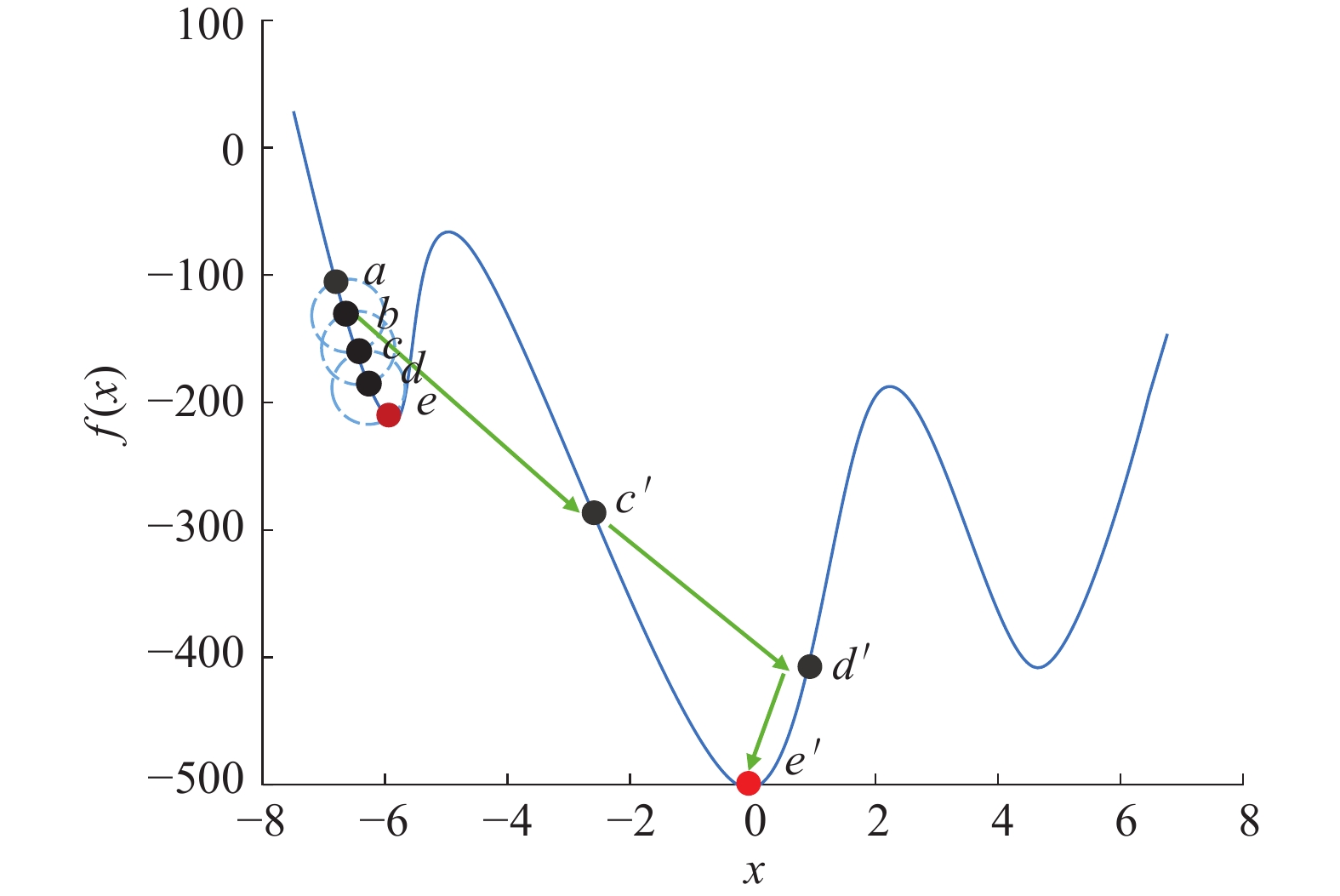
 下载:
下载:
